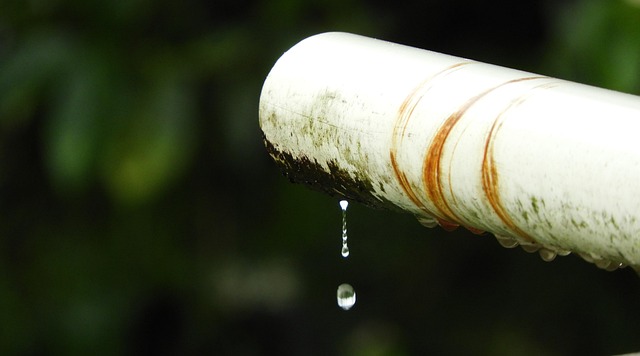Non-invasive leak detection technology is transforming infrastructure maintenance by accurately identifying and locating leaks without damage or disruption. Advanced sensors emit signals that detect anomalies, while sophisticated data analysis pinpoints leak sources, size, and type. This method is particularly valuable in urban areas for its cost-effectiveness, efficiency, and safety, ensuring swift repairs with minimal environmental impact. Adopting these non-invasive methods offers significant financial and environmental advantages over traditional invasive techniques, making them a sustainable and efficient solution for various industries, including water management, oil and gas, manufacturing, and residential/commercial settings.
Non-Invasive Leak Detection is transforming how industries address fluid leaks, offering a cost-effective and environmentally friendly alternative. This comprehensive guide delves into the world of non-invasive technology, explaining its practical application, remarkable benefits, and diverse uses across sectors. From advanced tools to implementation strategies, we explore the key elements ensuring accurate and efficient leak detection. Discover the future trends shaping this innovative field and learn how your organization can leverage these breakthroughs in leak detection.
Understanding Non-Invasive Leak Detection: A Comprehensive Overview

Non-invasive leak detection is a cutting-edge technology designed to identify and locate leaks within various systems, from water pipelines to industrial gas networks, without causing any damage or disruption. Unlike traditional invasive methods that require digging or physical access, non-invasive techniques utilise advanced sensors and data analysis to pinpoint leak sources. These methods are particularly valuable in urban areas where infrastructure is heavily concentrated, as they minimise interference with everyday activities and reduce the risk of further contamination or damage.
The process involves deploying specialised equipment that emits signals or sounds into the system. As these waves travel through pipes or structures, any anomalies caused by a leak will alter their path or pattern. By measuring these changes and using sophisticated algorithms, experts can accurately determine the location, size, and type of leak. This technology offers a cost-effective, efficient, and safe solution for maintaining critical infrastructure, ensuring swift repair and minimising potential environmental impact.
How Does Non-Invasive Technology Work in Practice?

Non-invasive leak detection technologies employ advanced sensing and signal processing techniques to identify leaks without causing any damage or disruption to the pipeline or system. These methods use various tools, such as specialized cameras, acoustic sensors, and radar systems, to detect even the smallest anomalies or changes in pressure that might indicate a leak.
In practice, non-invasive technology works by sending signals through the pipe wall or ground above it. For example, ultrasonic or radar sensors can transmit high-frequency sound waves or radio waves, which then bounce back when they encounter differences in material properties caused by a leak. By analyzing these reflected signals, experts can pinpoint the exact location and size of the leak, enabling efficient and targeted repair without the need for excavation or system shutdowns, thus minimizing downtime and cost for infrastructure maintenance.
Benefits of Adopting This Method: Cost-Effective and Eco-Friendly

Adopting non-invasive leak detection methods offers a multitude of benefits, both financially and environmentally. In terms of cost-effectiveness, traditional invasive techniques often involve significant expenses due to extensive digging and damage to property. By contrast, non-invasive methods employ advanced technologies like infrared cameras and ground-penetrating radar to identify leaks without disrupting surfaces or infrastructure. This not only saves on repair costs but also prevents unnecessary environmental damage during the detection process.
Furthermore, eco-friendliness is a crucial aspect of non-invasive leak detection. Traditional methods often rely on harmful chemicals or disruptive excavation practices that can contaminate soil and water sources. Non-invasive techniques, however, eliminate these risks by providing accurate leak location and size information without causing environmental harm. This makes them a preferred choice for areas with sensitive ecosystems or strict environmental regulations, ensuring the preservation of local habitats and resources.
Common Applications Across Industries

Leak detection technologies have found widespread applications across various industries, revolutionizing how we identify and mitigate potential risks. From water management to industrial processes, the need for efficient and non-invasive leak detection has driven significant advancements in sensor technology and data analytics. In the oil and gas sector, for instance, early leak detection is crucial for preventing environmental disasters and ensuring operational safety.
In manufacturing and infrastructure, non-invasive leak detection systems play a pivotal role in maintaining the integrity of pipelines, reservoirs, and storage tanks. By employing advanced sensors and remote monitoring, these systems can quickly pinpoint leaks, enabling prompt repairs and minimizing costly downtime. This technology is particularly valuable in hard-to-reach areas or sensitive environments where traditional invasive methods are impractical or disruptive.
Advanced Tools and Techniques for Accurate Results

In the realm of leak detection, modern technology has brought about a revolution with advanced tools and techniques that promise accurate results. These innovations have transformed how we identify and mitigate water leaks, which is crucial for both residential and commercial properties. From sophisticated sensor systems to high-tech cameras, professionals now have an array of options to pinpoint leaks swiftly and efficiently.
One notable development is the use of smart sensors capable of detecting subtle changes in pressure and flow patterns. These sensors can be strategically placed throughout plumbing systems to provide real-time data. Additionally, infrared thermal imaging cameras offer a non-invasive way to visualise hidden leaks by detecting temperature variations. When combined with ground-penetrating radar, these techniques create a comprehensive leak detection toolkit, ensuring that even the most elusive leaks are not overlooked.
Implementation and Training: Ensuring Efficient Operations

The successful implementation of Non-Invasive Leak Detection (NILD) systems relies heavily on efficient training practices. Training programs should equip personnel with a comprehensive understanding of NILD technologies, including their limitations and capabilities. This involves hands-on practice in deploying sensors, interpreting data, and identifying potential false positives or negatives. By fostering a culture of continuous learning, organizations can ensure technicians are adept at navigating complex scenarios, optimizing sensor placement for accurate readings, and effectively communicating findings to stakeholders.
Regular training sessions, coupled with real-world case studies, play a pivotal role in refining skills. Simulating various leak scenarios allows technicians to hone their problem-solving abilities, ultimately leading to faster response times and more precise leak detection. This proactive approach not only enhances operational efficiency but also contributes to cost savings by minimizing damage and waste associated with leaks.
The Future of Leak Detection: Trends and Innovations

The future of leak detection is poised for significant advancements, driven by technological innovations and a growing need for efficient, cost-effective solutions. One prominent trend is the integration of smart sensors and Internet of Things (IoT) devices. These advanced sensors can detect even minor pressure changes, enabling early leak identification and remote monitoring. This real-time data provides maintenance teams with crucial insights, allowing them to address issues promptly and minimize damage.
Another emerging innovation is the use of aerial surveillance and drones equipped with thermal imaging cameras. This technology offers a comprehensive view of infrastructure, especially in hard-to-reach areas, making it ideal for detecting leaks in pipes, tanks, and other hidden components. By combining these cutting-edge approaches with traditional methods, the field of leak detection will continue to evolve, ensuring more efficient water management and reduced environmental impact.
